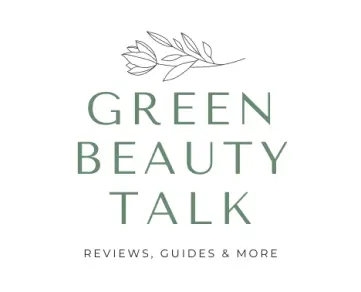
If you’re looking into natural clays for your skin, you’ve probably heard a lot about bentonite clay. It’s been a go-to for controlling oily skin and clearing up acne for a long time. But what about zeolites? They’re newer on the scene and promise to detoxify your skin gently.
It’s perfectly normal to wonder which one is right for you and how they stack up against each other. Let’s get into what each clay can do for your skin, helping you decide which one might be best for your specific concerns.
Getting to Know Bentonite Clay
Bentonite clay, also known as Montmorillonite clay, comes from volcanic ash. It’s found in plenty of places, but a lot of it comes from Wyoming and Montana. This clay is a treasure trove of minerals like calcium, magnesium, and iron, which are all good for your skin. It’s great at absorbing oil and drawing out the dirt and toxins that can lead to acne.
Bentonite clay is also effective for treating skin issues like dermatitis and helps heal skin lesions and ulcers, soothing the area and speeding up recovery.
Bentonite isn’t just for skin, though; it’s also used in health supplements and as a natural support for detoxifying the body.
Whether you need a deep skin cleanse, want to manage oily skin, or need a soothing treatment for skin irritation, bentonite clay could be your go-to solution.

Exploring Zeolites: Your Skin’s Gentle Guard
Zeolites might sound new, but one type, zeolite clinoptilolite, has been around for a while. This zeolite is formed from volcanic ash that reacts with alkaline groundwater. It’s well-loved for its detox abilities—it can capture toxins and heavy metals, which is great for both environmental clean-up and your skin.
What makes zeolites stand out? They’re kinder to your skin than many other detoxifying ingredients. They help fight free radicals and calm inflammation, making them a top pick for anyone with sensitive or easily irritated skin. Zeolites aren’t just for skincare; they’re also used in water purification and as food supplements because of their safe, cleansing properties.
To dive deeper into how zeolites work and their benefits, check out more detailed info here and learn about their uses in skincare here.

Which Clay Wins for Acne-Prone Skin?
For those dealing with oily and acne-prone skin, bentonite clay is the better choice. Its strong oil-absorbing properties help reduce shine and prevent breakouts by pulling oil and dirt from pores. However, it’s worth noting that bentonite can be quite drying, which might not suit those with sensitive or dry skin.
Zeolite offers a milder alternative. It also cleanses and removes impurities but do so more gently, making it ideal for sensitive skin types that need a thorough cleanse without harshness or excessive drying.
Can Bentonite or Zeolite Help Whiten Your Skin?
If you are looking to brighten your complexion both bentonite and zeolite can help. Bentonite’s slight exfoliating effect helps remove dead skin cells, revealing fresher, brighter skin underneath. It’s great for evening out skin tone and reducing the appearance of old acne scars.
Zeolite also brightens up your face but in a softer way. It detoxifies and helps fight off the damage from pollutants and stress, which can leave your skin looking dull.
Quick Comparison: Bentonite Clay vs. Zeolite
Ready for a quick snapshot? Here’s how bentonite clay and zeolite stack up:
- Best for Oily/Acne-Prone Skin: Bentonite Clay
- Best for Sensitive Skin: Zeolite
- Skin Whitening/Brightening: Both, with bentonite being more exfoliating and zeolite more protective
- Detoxifying Properties: Both
- Recommended Usage: Varies depending on your specific skin needs—mix up a mask or find a product that harnesses their powers.
Easy Ways to Add Clays to Your Skincare Routine
Adding bentonite clay or zeolite to your skincare routine doesn’t have to be complicated. Here are a few simple ways to get started:
- DIY Masks: Mix either clay with water or a hydrating ingredient like aloe vera gel to form a paste. Apply to your face and let it dry before rinsing off. This is great for a deep cleanse or when your skin feels oily.
- Spot Treatment: For targeted acne treatment, apply a small amount of bentonite clay directly to blemishes and let it dry to help reduce inflammation and draw out impurities.
- Daily Cleansers: Some gentle cleansers contain zeolite to help remove daily impurities without stripping the skin. These can be used daily as part of your normal skincare routine.
What You Should Watch Out For: Side Effects
While natural clays are generally safe for most skin types, there are a few things to keep in mind:
- Dryness and Irritation: Bentonite clay can be quite drying, especially if used too frequently or left on the skin for too long. Always moisturize after using clay masks.
- Redness: Both clays can cause temporary redness after use due to increased blood flow to the skin, which is generally normal but should fade within a few hours.
- Allergic Reactions: Always do a patch test on a small area of skin before using a new clay product, especially if you have sensitive skin.
With these tips and precautions, you can safely explore the benefits of bentonite clay and zeolite and see which works best for your skin type and concerns.
FAQs
How often should I use bentonite clay and zeolites in my skincare routine?
For oily and acne-prone skin, using bentonite clay 2-3 times a week is ideal. For sensitive skin or when using zeolite, once a week is sufficient to see benefits without causing irritation.
Can I use bentonite clay and zeolites together in the same skincare routine?
Yes, you can alternate between using bentonite clay and zeolite based on your skin’s needs. However, it’s best not to mix them directly in the same mask to avoid overloading the skin.
Can these clays help with other skin issues, like wrinkles or sun damage?
While bentonite clay and zeolite are primarily known for their cleansing and detoxifying properties, they can mildly improve the appearance of wrinkles and sun damage by promoting skin turnover and reducing inflammation.

Petra Nakashian (previously Kravos) is a dedicated natural health and beauty blogger, driven by the loss of her parents to cancer, which led her to meticulously research beauty product ingredients. With over 10 years of experience, her in-depth knowledge has made her a trusted expert in the field. Founder of Be Healthy Now and Green Beauty Talk, Petra recently expanded her expertise with Beauty Insights Hub, exploring a wider range of beauty treatments. Committed to transparency and honesty, her work is a vital resource for navigating the complex world of beauty.

